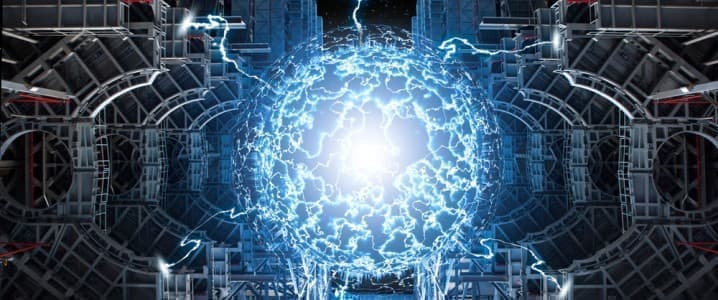At the beginning of 2024, the U.K. Conservative government launched its nuclear power roadmap, with plans to increase nuclear generation by up to four times, to 24GW by 2050. After taking government in July, Kier Starmer’s Labour Party doubled down on plans to develop the U.K.’s nuclear power as part of an accelerated green transition. However, delays in the development of new power plants and other challenges have threatened the achievement of the country’s ambitious nuclear goals. Now, a massive cash injection could help the government achieve its nuclear objectives.
In January 2024, the U.K. government announced the biggest nuclear power expansion in 70 years. This was aimed at driving down energy bills and decreasing reliance on fossil fuels as part of a green transition. The Civil Nuclear Roadmap outlines development aims, including conventional power plants, such as Sizewell C, and the development of the country’s small modular reactor (SMR) technology.
The government stated plans to invest up to $370.5 million in the domestic production of enriched uranium, known as HALEU, which was only being commercially produced in Russia. This is the fuel that powers modern nuclear reactors. It also introduced an additional $12.4 million for the development of the skills and sites required to produce other advanced nuclear fuels in the U.K. The company Great British Nuclear was also created to deliver the government’s long-term nuclear programme.
At the time, Tom Greatrex, the CEO of the Nuclear Industry Association, stated, “We welcome the publication of the roadmap – the commitment to explore a further large-scale project beyond Sizewell C in parallel with the deployment of SMRs is very welcome. We will need both large and small nuclear at scale and at pace for our energy security and net zero future.”
This January, the U.K. Labour government pledged a record $506 million in investment for nuclear fusion, which will contribute to the development of a new fusion facility at an old coal plant site in Nottinghamshire. The hope is that the financing will help accelerate the development of U.K. nuclear fusion power to provide abundant clean energy.
The investment will support the construction of the prototype power plant at the decommissioned West Burton coal site by 2040. It will also contribute to the repurposing of the U.K.’s pioneering fusion machine at the Culham Centre for Fusion Energy in Oxfordshire. The government stated during its first autumn budget statement that it would provide “significant support” for nuclear fusion research, and this is the result. If achieved, a nuclear fusion reaction could produce around four times more energy per kilogramme of fuel than nuclear fission, which is the opposite process that is currently used in conventional power plants.
The International Energy Agency defines nuclear fusion as the process by which two light atomic nuclei combine to form a single heavier one while releasing massive amounts of energy. Fusion reactions take place in a state of matter called plasma—a hot, charged gas made of positive ions and free-moving electrons with unique properties distinct from solids, liquids, or gases…nuclei need to collide with each other at extremely high temperatures – around ten million degrees Celsius. When the nuclei come within a very close range of each other, the attractive nuclear force between them will outweigh the electrical repulsion and allow them to fuse.
Several breakthroughs have been made in recent years. In 2022, a group of American scientists at the National Ignition Facility (NIF) at the Lawrence Livermore National Laboratory (LLNL) in California announceda breakthrough after they produced a higher energy output than the input during a fusion experiment. Then, in 2024, scientists at the U.K.-based JET laboratory achieved more energy production through a fusion process than anywhere ever before, after four decades of research.
China is also hoping to make strides in fusion innovation after announcing funding of between $1 and $1.5 billion a year for the sector. The Shanghai-based startup Energy Singularity built its own tokamak – a complex cylindrical or donut-shaped machine that heats hydrogen to extreme temperatures – within its first three years of operation, faster than any other company has built a comparable reactor. This suggests that China could become highly competitive in fusion technology over the next decade.
The U.K. government announced a shortlist of five bids for the construction of the fusion plant in Nottinghamshire, with construction and engineering contracts expected to be announced in late 2025 or early 2026. This development of the U.K.’s nuclear power sector is expected to support the creation of thousands of jobs in the coming decades.
While the government has faced several hurdles in developing the U.K.’s nuclear power sector, the announcement of massive new funds for nuclear fusion research and development could help the country to build upon its technological breakthroughs to become one of the first producers of the abundant clean energy. Meanwhile, the government will also support the development of conventional nuclear reactors and SMRs for mid- to long-term production.
By Felicity Bradstock for Oilprice.com




